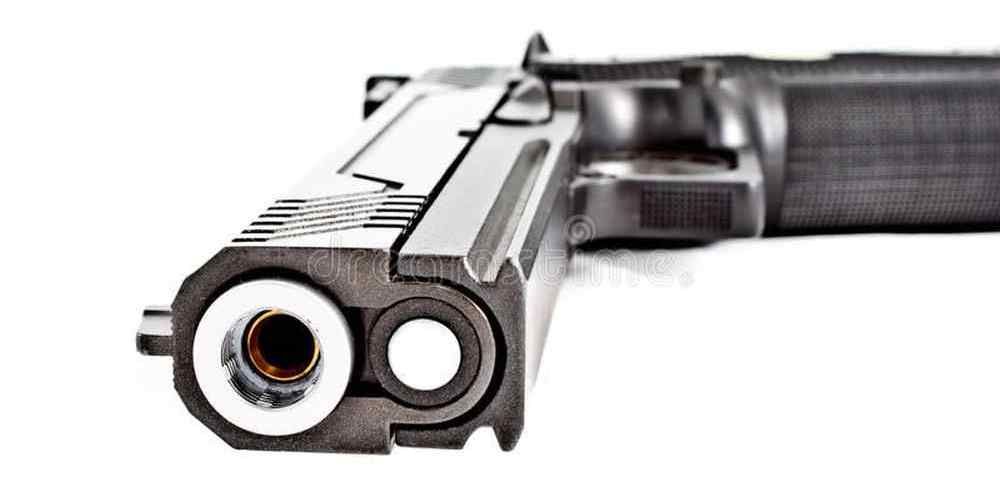“Exploring the foundation of freedom and protection in America.”
The History of the Second Amendment
The Second Amendment to the United States Constitution has been a topic of much debate and controversy over the years. It reads, “A well regulated Militia, being necessary to the security of a free State, the right of the people to keep and bear Arms, shall not be infringed.” This seemingly simple sentence has sparked a myriad of interpretations and arguments about what it truly means.
To understand the Second Amendment, it is important to delve into its history. The amendment was adopted as part of the Bill of Rights in 1791, following the American Revolutionary War. At that time, the Founding Fathers were wary of a standing army and believed that a well-regulated militia composed of citizens was essential to the security of the new nation. As such, they enshrined the right of the people to keep and bear arms in order to ensure that the government could not disarm the populace and infringe upon their ability to defend themselves and their country.
The historical context of the Second Amendment sheds light on its original intent. It was not meant to guarantee an individual right to own firearms for personal protection or hunting, as some proponents of gun rights argue today. Instead, it was intended to protect the collective right of the people to maintain a well-regulated militia as a check against government tyranny.
Over the years, the interpretation of the Second Amendment has evolved. In 2008, the Supreme Court ruled in District of Columbia v. Heller that the Second Amendment protects an individual right to possess a firearm for self-defense within the home. This landmark decision marked a significant shift in the understanding of the Second Amendment and has fueled ongoing debates about the scope of gun rights in America.
Despite the Heller decision, the debate over the Second Amendment continues to rage on. Gun control advocates argue that the amendment should be interpreted in light of modern realities, such as the prevalence of mass shootings and gun violence in the United States. They believe that stricter gun laws are necessary to prevent further tragedies and protect public safety.
On the other hand, gun rights advocates maintain that the Second Amendment is a fundamental right that should not be infringed upon. They argue that the right to bear arms is essential for self-defense and as a safeguard against government overreach. They point to the historical context of the Second Amendment and the importance of individual liberty in a free society.
In conclusion, the history of the Second Amendment is complex and multifaceted. It reflects the Founding Fathers’ concerns about government tyranny and the need for a well-regulated militia. However, the interpretation of the Second Amendment has evolved over time, leading to ongoing debates about the scope of gun rights in America. Ultimately, the Second Amendment remains a deeply divisive issue that continues to shape the national conversation about gun control and constitutional rights.
Current Debates Surrounding Gun Control
The Second Amendment to the United States Constitution has been a topic of heated debate for many years, especially in the context of gun control. The amendment, which was ratified in 1791, states that “A well regulated Militia, being necessary to the security of a free State, the right of the people to keep and bear Arms, shall not be infringed.” This seemingly simple statement has sparked a myriad of interpretations and arguments about what it means in today’s society.

One of the main points of contention surrounding the Second Amendment is whether it guarantees an individual right to own firearms, or if it only protects the right of states to maintain militias. This debate has been at the center of many court cases and legislative battles, with both sides presenting compelling arguments to support their positions.
Proponents of gun rights argue that the Second Amendment clearly protects an individual’s right to own firearms for self-defense and other lawful purposes. They point to historical evidence, such as the writings of the Founding Fathers and early court decisions, to support their interpretation of the amendment. They also argue that restricting access to firearms would infringe upon the rights of law-abiding citizens and make them more vulnerable to crime.
On the other hand, advocates for gun control argue that the Second Amendment was intended to protect the collective right of states to maintain militias, not the individual right to own firearms. They point to the language of the amendment itself, which mentions the importance of a well-regulated militia in ensuring the security of a free state. They also argue that the proliferation of firearms in society has led to an increase in gun violence and mass shootings, making it necessary to enact stricter gun control measures.
The debate over the Second Amendment has only intensified in recent years, as the United States has experienced a series of high-profile mass shootings that have reignited calls for stricter gun control laws. In response to these tragedies, lawmakers at both the state and federal levels have proposed a variety of measures aimed at reducing gun violence, such as universal background checks, bans on assault weapons, and red flag laws.
Despite these efforts, progress on gun control legislation has been slow, due in part to the strong opposition from gun rights advocates and the powerful gun lobby. The National Rifle Association (NRA), in particular, has been a vocal opponent of any new gun control measures, arguing that they would infringe upon the Second Amendment rights of law-abiding citizens.
As the debate over gun control continues to rage on, it is clear that finding a solution that satisfies both sides of the argument will be a difficult task. However, it is important for lawmakers and citizens alike to engage in a thoughtful and respectful dialogue about the Second Amendment and its implications for our society. Only through open and honest discussion can we hope to find common ground and work towards a safer and more secure future for all Americans.
Supreme Court Cases Interpreting the Second Amendment
The Second Amendment of the United States Constitution has been a topic of much debate and controversy over the years. One of the key issues surrounding the Second Amendment is the interpretation of the right to bear arms. The Supreme Court has played a crucial role in shaping the understanding of this constitutional right through a series of landmark cases.
One of the most significant Supreme Court cases interpreting the Second Amendment is District of Columbia v. Heller. In this case, the Court held that the Second Amendment protects an individual’s right to possess a firearm for self-defense within the home. The Court also ruled that the right to bear arms is not unlimited and can be subject to certain restrictions, such as prohibiting felons and the mentally ill from owning firearms.
Another important case that has shaped the interpretation of the Second Amendment is McDonald v. City of Chicago. In this case, the Court held that the Second Amendment applies to the states through the Fourteenth Amendment’s incorporation clause. This decision extended the protections of the Second Amendment to state and local governments, ensuring that individuals’ right to bear arms is not infringed upon by state or local laws.
The Supreme Court has also addressed the issue of gun control in cases such as United States v. Miller and United States v. Lopez. In United States v. Miller, the Court held that the Second Amendment protects the right to bear arms that are in common use for lawful purposes. This decision established that certain types of firearms, such as machine guns, can be regulated by the government.
In United States v. Lopez, the Court addressed the constitutionality of the Gun-Free School Zones Act, which prohibited individuals from carrying firearms in school zones. The Court held that the Act exceeded Congress’s authority under the Commerce Clause and was therefore unconstitutional. This decision reaffirmed the principle that the Second Amendment places limits on the government’s ability to regulate firearms.
Overall, the Supreme Court has played a crucial role in interpreting the Second Amendment and shaping the understanding of individuals’ right to bear arms. Through landmark cases such as District of Columbia v. Heller and McDonald v. City of Chicago, the Court has established that the Second Amendment protects an individual’s right to possess firearms for self-defense while also recognizing that certain restrictions can be placed on this right.
As the debate over gun control and the Second Amendment continues, it is important to consider the Supreme Court’s decisions and the principles they have established. The Court’s rulings have provided guidance on how to balance the right to bear arms with the need for public safety and regulation. By understanding the Court’s interpretations of the Second Amendment, we can better navigate the complex issues surrounding gun rights and gun control in the United States.
The Impact of the Second Amendment on Society
The Second Amendment to the United States Constitution has been a topic of much debate and controversy since its inception. This amendment, which was ratified in 1791, states that “A well regulated Militia, being necessary to the security of a free State, the right of the people to keep and bear Arms, shall not be infringed.” This seemingly simple statement has sparked a myriad of interpretations and arguments over the years, with proponents of gun rights and gun control each claiming to have the correct understanding of its meaning.
One of the key arguments made by supporters of the Second Amendment is that it is a fundamental right that is essential to the preservation of liberty and democracy. They argue that an armed citizenry is necessary to protect against tyranny and government overreach, and that the right to bear arms is a crucial check on government power. This argument is rooted in the historical context of the amendment, which was written in the aftermath of the American Revolution when the Founding Fathers were wary of the potential for a tyrannical government to emerge.
On the other hand, opponents of the Second Amendment argue that the right to bear arms has led to a proliferation of gun violence in the United States and that stricter gun control measures are necessary to protect public safety. They point to the high rates of gun-related deaths and mass shootings in the country as evidence that the current interpretation of the Second Amendment is flawed and needs to be reevaluated.
The impact of the Second Amendment on society is undeniable, as it has shaped the way Americans view gun ownership and gun rights. The debate over the meaning of the amendment has led to a wide range of laws and regulations at the federal, state, and local levels, with some jurisdictions enacting strict gun control measures while others have adopted more permissive policies.
One of the most contentious issues related to the Second Amendment is the question of whether or not it protects an individual right to bear arms, or if it only applies to the collective right of a well-regulated militia. The Supreme Court has weighed in on this issue in recent years, with landmark decisions such as District of Columbia v. Heller (2008) and McDonald v. Chicago (2010) affirming that the Second Amendment protects an individual right to bear arms for self-defense.
Despite these rulings, the debate over the Second Amendment continues to rage on, with both sides of the argument presenting compelling arguments in support of their positions. The impact of the Second Amendment on society is far-reaching, influencing everything from gun laws to public policy to political discourse.
In conclusion, the Second Amendment is a deeply ingrained part of American society that has had a profound impact on the way we view gun rights and gun control. The debate over its meaning and interpretation is likely to continue for years to come, as both sides of the argument seek to shape public policy and protect their respective interests. Ultimately, the Second Amendment is a complex and multifaceted issue that will require careful consideration and thoughtful debate in order to find a balance between individual rights and public safety.
Comparing the Second Amendment to Other Constitutional Rights
The Second Amendment to the United States Constitution has been a topic of much debate and controversy over the years. It states, “A well regulated Militia, being necessary to the security of a free State, the right of the people to keep and bear Arms, shall not be infringed.” This amendment has been interpreted in various ways, with some arguing that it guarantees an individual’s right to own firearms, while others believe it only protects the right to bear arms in the context of a well-regulated militia.
When comparing the Second Amendment to other constitutional rights, it is important to consider the historical context in which it was written. The Founding Fathers were deeply concerned about the potential for tyranny and believed that an armed citizenry was essential to safeguarding liberty. This belief is reflected in the language of the Second Amendment, which emphasizes the importance of a well-regulated militia in maintaining the security of a free state.
In contrast to the Second Amendment, other constitutional rights such as the First Amendment, which guarantees freedom of speech, religion, and the press, are more broadly interpreted and have been the subject of extensive legal analysis. The Supreme Court has established a framework for evaluating restrictions on these rights, balancing the government’s interest in regulating certain types of speech or expression with the individual’s right to freedom of expression.
Similarly, the Fourth Amendment, which protects against unreasonable searches and seizures, has been the subject of numerous court cases that have clarified the scope of its protections. The Supreme Court has established that individuals have a reasonable expectation of privacy in certain areas, such as their homes, and that law enforcement must obtain a warrant based on probable cause before conducting a search.
In contrast, the Second Amendment has not been subject to the same level of legal analysis and interpretation. The Supreme Court has only recently begun to address the scope of the Second Amendment in cases such as District of Columbia v. Heller (2008) and McDonald v. City of Chicago (2010), which established that the Second Amendment protects an individual’s right to own firearms for self-defense.
Despite these decisions, there is still significant debate over the meaning of the Second Amendment and the extent to which it protects an individual’s right to own firearms. Some argue that the Second Amendment should be interpreted narrowly, in light of the Founding Fathers’ concerns about maintaining a well-regulated militia. Others believe that the Second Amendment guarantees an individual’s right to own firearms for self-defense and other lawful purposes.
In conclusion, the Second Amendment is a unique constitutional right that has been the subject of much debate and controversy. When comparing it to other constitutional rights, it is clear that the Second Amendment has not been subject to the same level of legal analysis and interpretation. As the Supreme Court continues to address the scope of the Second Amendment in future cases, it will be important to consider the historical context in which it was written and the Founding Fathers’ intent in guaranteeing the right to bear arms.







